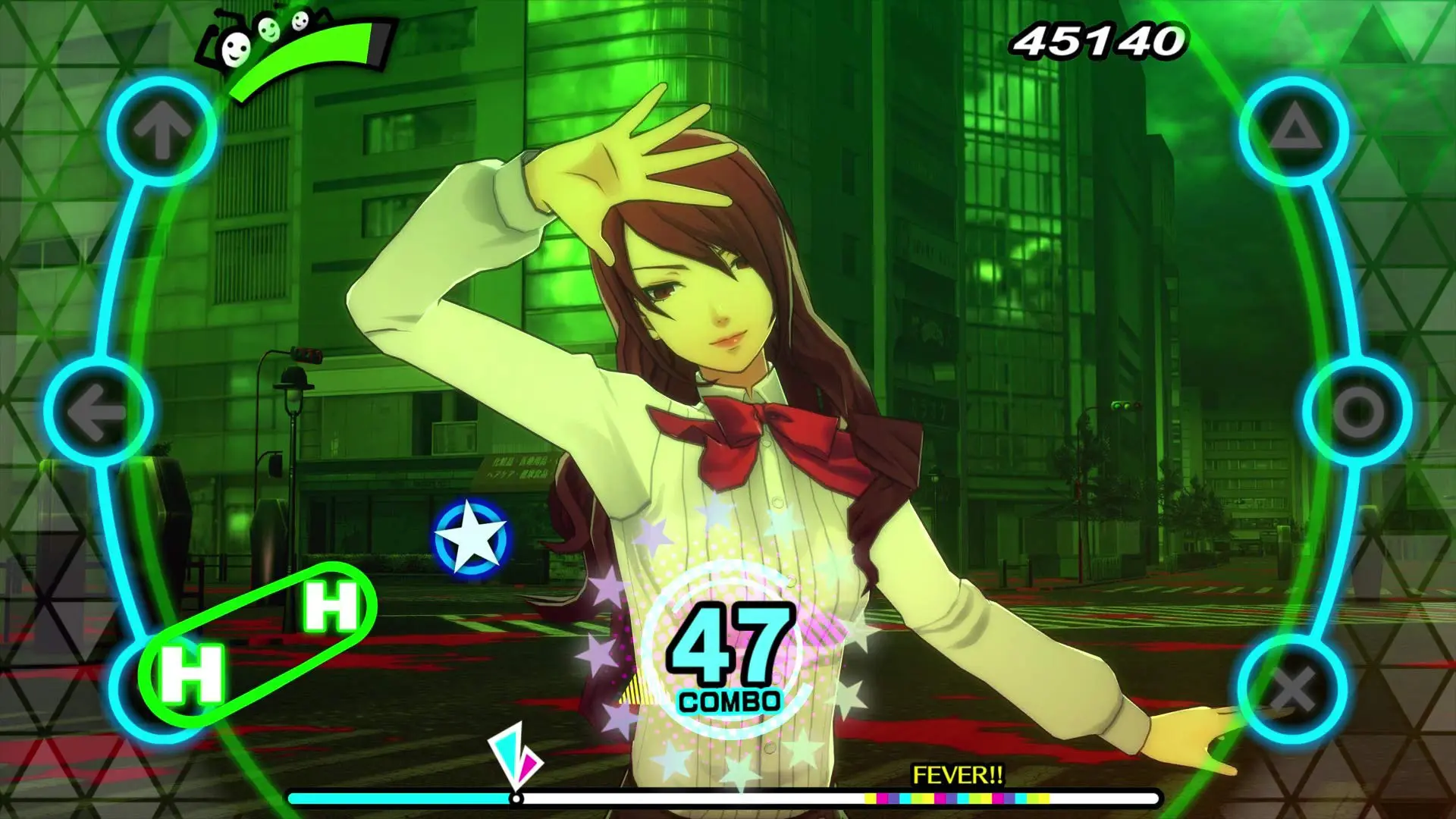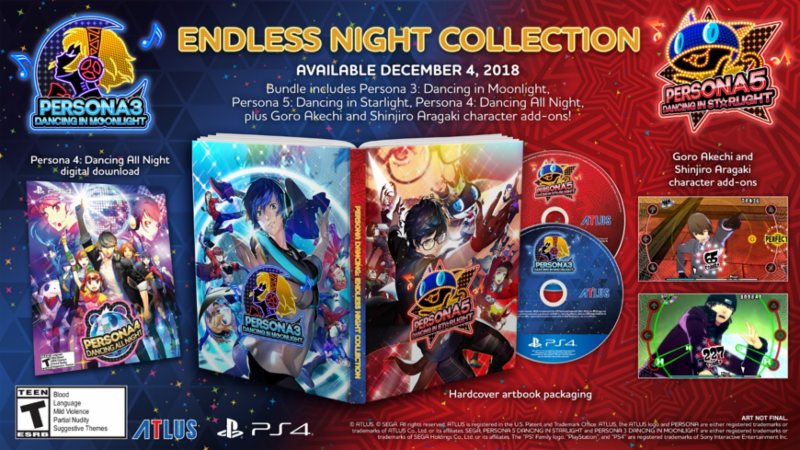The Persona itch is something that becomes increasingly difficult to scratch as the fandom around the series becomes more and more complex. Things used to be simple, every couple of years there would be a new JRPG and that would be the end of things, now there are fighting games and rhythm games, all of which are technically part of the core plot. Now Atlus has released another side story game, in the way of the Endless Night Collection—a dancing game very similar to that of Hatsune Miku in mechanics and mildly complex purchasing methods.
The first thing to point out is that this will be a review of the Persona: Endless Night Collection; this bundle includes Persona 3: Dancing in Moonlight, Persona 5: Dancing in Starlight, and the remaster Persona 4: Dancing All Night for the PS4. There are three other bundles, two which are only P3/P5 but for the PlayStation 4 or Vita (the Vita version is priced differently), and a version for the Vita that includes a bunch of DLC. The most complex part of writing this review was trying to figure out what the differences between the versions where. The conclusion is simply to go for the Endless Night Collection because that has everything, although it does cost 100 dollars.
The reasoning for saying this is that Persona 4: Dancing is the most fleshed out in the terms of story. The other two titles are perfectly fine additions to anyone who already owns that title and played it to death when it first came out, but the story in both games consists mainly of “yeah, so we are going to have you dance now,” and questions about anything else are quickly forgotten. The difference in storytelling is night and day between P4 and the others as well, as some quick handwaving is done to basically say that there is no reason that it couldn’t be included in Persona canon, but no one would ever talk about it after these games.
The gameplay resembles Miku titles, mainly, because people involved in those games were part of the development of the first Persona dancing game, at least at the very start. That guidance can be felt as the titles certainly feel and play almost identical to the aforementioned titles—in the best ways possible. That isn’t to say that Atlus hasn’t put an unique twist on the formula, in the way of social events for characters when specific thresholds are crossed, say 1000 combos total are performed, making the game feel more like the odd mixture of life sim meets whatever that the Persona brand quickly is becoming.
There are also a ton of unlockable cosmetics. These run the gambit from cool and stylish to making the characters look completely insane, although why would you need anything besides items that make the characters look totally ridiculous is beyond me. Unlocking them differs between P4 and the other games, but the P3/P5 titles are much the same as the social events and are based on certain conditions being met before they are unlocked, while P4 is a beast all of its own.
The Persona Dancing games are fun, and a must buy for anyone who enjoys either a good Miku title, rhythm game or Persona game. The only real drawback is that there are four different pricing structures that confuse things to an insane point. This might have been done because Atlus was afraid of putting out a 100 dollar game with not a ton of explanation, but for the fans it is worth it. Between the amount of songs and additional content (including P4 Dancing finally on a home console), it is worth a purchase for anyone who is serious about the going ons with their favorite characters in the MegaTen Universe.
Rating
Our Rating - 8.5
8.5
Total Score
PC Editor. I am amazing and super awesome. I also fight crime in my free time



















Leave a Reply